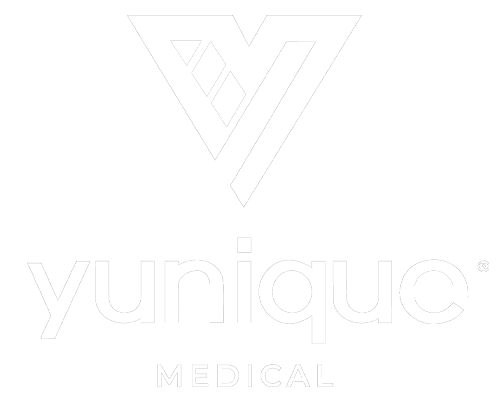We do NOT answer medical questions online or via text. We do NOT sell individual peptides. Our clinical peptides are available only through our optimization and longevity programs.
Infusion therapy has become one of the most common approaches in precision longevity. Each type is designed with a different target: some reach the cellular level to support repair, others drive energy production, and others aim to slow the biological processes of aging.
The focus today is not just on adding years to life, but on extending healthspan — the years lived with strength, clarity, and resilience.
Here’s what to know about the different types of infusion therapy being used in the longevity space, how they work, and where the science stands.
Is Infusion Therapy Linked to Longevity?
Infusion therapy is linked to longevity because it goes after the same weak points that drive aging: energy loss, oxidative stress, DNA damage, and slower repair. Each of those shows up in the way people feel day to day, and each has a biological pathway that infusions are designed to support.
To understand how the connection works, it helps to look at the main biological targets infusion therapy is designed to reach:
Mitochondrial support and cellular energy
Mitochondria are the engines inside every cell. When they slow down, energy drops and recovery takes longer. Infusions with NAD+ or B vitamins are aimed at recharging that system so cells can keep up with daily demand.
Oxidative stress reduction
Over time, cells take hits from free radicals. Vitamin C and glutathione drips are meant to bring antioxidant levels back up, protecting tissues from that constant wear and tear.
DNA repair and cellular resilience
DNA damage is part of aging. Compounds like NAD+ help activate repair pathways, giving cells a better chance to maintain function instead of breaking down early.
Immune system and tissue repair pathways
Nutrients like zinc, magnesium, and vitamin C help the immune system stay responsive and support collagen formation for healing. Infusions deliver them at levels the body can use immediately.
Infusion therapy doesn’t replace core habits like nutrition and movement, but it targets the biological processes most connected to how we age. That’s why it continues to be explored as part of a precision longevity strategy.

What Types of Infusion Therapy Are Used for Longevity?
1. NAD infusion therapy
- NAD+ is a coenzyme found in every cell, and levels fall as we age. Infusions deliver it directly into the bloodstream, where it fuels mitochondrial energy production and activates DNA repair enzymes.
- For longevity, the appeal lies in its ability to recharge cellular energy, sharpen focus, and strengthen repair pathways.
- Many clients report steadier energy, sharper focus, and improved recovery, making it one of the most recognized options in longevity care.
2. Vitamin therapy and antioxidant drips
- These drips mix nutrients like vitamin C, B-complex, glutathione, zinc, and magnesium. By bypassing digestion, they raise antioxidant and nutrient levels quickly, giving the body material it can use right away.
- The intent is to support immune defense, maintain collagen and skin integrity, and improve overall energy.
3. Plasma therapy
- Plasma therapy procedures, like plasma exchange or infusion, are another area being studied for its impact on immune signaling and aging biology. The idea is that plasma may carry circulating factors that influence how cells age and repair.
- In the context of longevity, the goal is to refresh circulating components that may lose effectiveness with age.
What Are the Potential Benefits and Limitations?
Benefits
Infusion therapy puts nutrients and compounds straight into the bloodstream, so cells can use them right away. People often turn to it for longevity support because it can:
- keep energy levels steadier
- speed up physical and mental recovery
- sharpen focus and clarity
- support skin health and collagen
- give repair systems extra fuel to stay active
Limitations
The main limitations have less to do with the therapy itself and more with how it is delivered and managed.
Some clinics make bold claims that don’t line up with the current research. A responsible provider takes a different path: staying updated on the best studies, following strict safety standards, and using infusions as part of a bigger, results-driven health plan.
Infusion therapy also isn’t meant to stand alone.
It works best alongside the basics that drive longevity: solid nutrition, good sleep, and regular movement. In that context, it can become a tool that supports energy, resilience, and repair.
Not everyone is the right candidate, and that’s where safety checks matter. Possible risks include:
- mild irritation or bruising at the IV site
- short-term nausea, flushing, or dizziness during treatment
- infection or fluid imbalance in rare cases
- complications for people with heart disease, kidney issues, or complex
- medication plans
A direct conversation with your doctor is the best way to decide whether infusion therapy fits into your long-term health strategy.
How Safe Is Infusion Therapy for Longevity?
For longevity-focused care, most clients tolerate it well, but infusion therapy risks and side effects can still happen.
Most common reactions
These are usually mild and short-lived, and staff can manage them on the spot:
- brief nausea, flushing, or dizziness during treatment
- a feeling of warmth as nutrients circulate
- minor bruising or irritation at the IV site
More serious issues
These don’t happen often, but they’re important to discuss before starting:
- infection at the insertion point if sterile technique isn’t followed
- shifts in fluid or electrolyte balance
- irritation or inflammation in the vein
- higher risks in clients with heart disease, kidney problems, or multiple medications
Licensed providers lower these risks by reviewing your history, checking labs, tailoring dosing, and monitoring vitals in real time. With those safeguards in place, infusion therapy can be integrated into a longevity plan.
When Does Infusion Therapy Make Sense for Longevity Goals?
Infusion therapy makes sense for longevity when it corrects real deficits or supports recovery that lifestyle alone can’t fully cover. It works best as a targeted tool, not a blanket solution.
Where it can help most:
- clients with nutrient deficiencies or absorption problems that limit the impact of oral supplements
- people with high physical or cognitive demands who need faster recovery and steadier energy
- those looking for an extra layer of focus, resilience, or cellular support as part of a broader longevity plan
Where extra caution is needed:
- cardiovascular disease, kidney conditions, or clotting disorders
- clients on complex medication regimens that may interact with infused compounds
Infusion therapy also isn’t meant to replace the foundations of longevity. Nutrition, restorative sleep, regular activity, and stress management remain the drivers of healthspan.
Infusions are best viewed as a complement — a precision tool that can be added to a comprehensive, results-driven protocol when the timing and biology line up.

What To Do Next
Infusion therapy can play a role in longevity, but it’s not the whole picture. The foundations of healthspan — nutrition, restorative sleep, daily movement, and stress control — remain the strongest determinants of how well we age.
If you’re interested in adding infusions to your plan, the next step is to weigh the costs, understand the risks, and confirm how your biology responds. The safest way to do that is through a guided conversation with a provider who can place infusion therapy in the context of a complete, long-term strategy.
FAQ: Infusion Therapy and Longevity
1. What infusion therapy slows down aging?
NAD+ infusions are most often linked to longevity because they support mitochondrial energy and DNA repair. Vitamin drips with antioxidants like vitamin C and glutathione are also used to protect cells from stress that drives aging.
2. Does IV therapy work for anti-aging?
IV therapy can deliver nutrients and compounds that target processes tied to aging, such as energy loss, oxidative stress, and slower repair. It’s not a stand-alone fix, but it can complement a larger plan for healthier aging.
3. What is the best anti-aging therapy?
There isn’t a single “best” therapy. The most effective approach depends on your biology. For some, it’s NAD+ infusions; for others, vitamin blends or lifestyle-focused strategies deliver the biggest impact. Testing and oversight help decide what fits.
4. Are IV infusions worth the money?
They can be, if they’re matched to your needs. Infusions work best when guided by diagnostics, overseen by trained providers, and integrated into a broader health plan.
Longevity Needs a Map
Adding years only matters if those years stay strong. The first step is mapping your biology and finding where resilience can be built. Strategy comes from data, not chance.
Our Services
We offer a wide range of services to support your wellness journey, including:
- Hormone Optimization
- Infusion Therapy
- Weight Loss Programs
- Cellular & Functional Medicine
- Precision Longevity
- HeartFit Program
- Sexual Enhancement
- Peptide Therapy
- HOCATT Biohacking
Our Locations
You can find us here:
- Port Orange, FL
- Lady Lake, FL (formerly Fruitland Park Office)
- Ocala, FL
Schedule a consultation and begin building your map for longevity.




